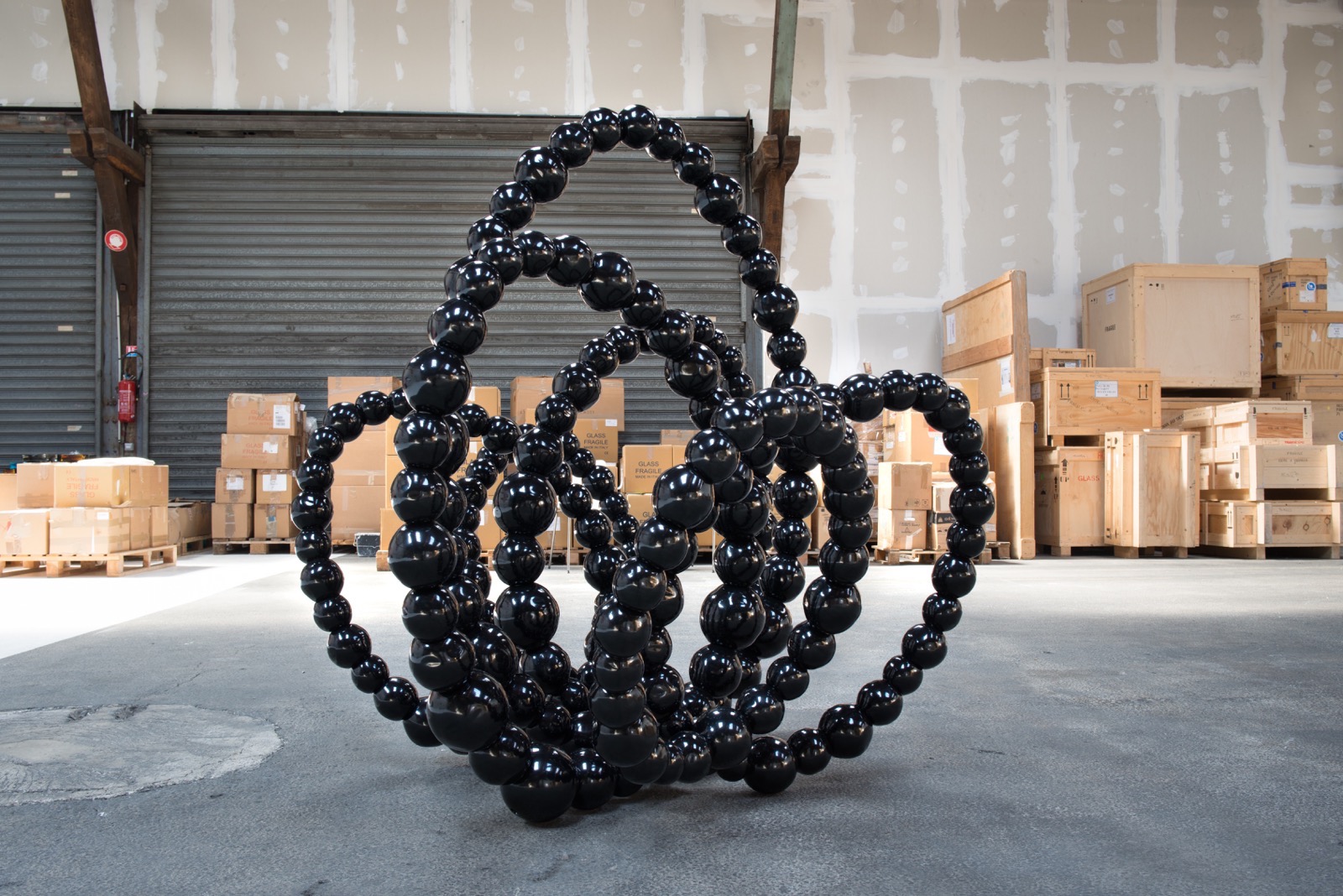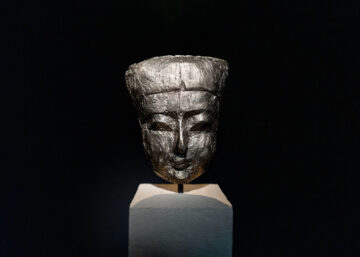A mysterious black and white photograph, the detail of an entrance gate to the Locus Solus villa, adorns the cover of a book on Jean-Michel Othoniel’s drawing table in the Marais district in Paris. The novel Locus Solus, written by Raymond Roussel in 1914 and illustrated by Othoniel in 2015, follows Martial Canterel, a scholarly scientist whose wealth has no limits, through the garden of his country estate near Paris as he reveals to a group of guests his seven enigmatic inventions. With glittering lexical games the author draws the reader into a surrealist plot that nests tales within tales. Seven ribbons holding seven little bronze medallions are sewn into the book to mark the seven wildly creative chapters. One chapter, for instance, takes us to the sunniest spot of his estate, where we encounter a gigantic dazzling diamond filled with a luminescent fluid. Floating gracefully in that liquid are a woman whose graceful moves produce music, seven seahorses towing a golden sphere that evokes Apollo’s chariot, and a cat. “I like the idea that you walk in the garden and you discover one piece and then another. They may be different, but they all match together because they all have the same storyteller,” says the soft-spoken French artist about his own work.


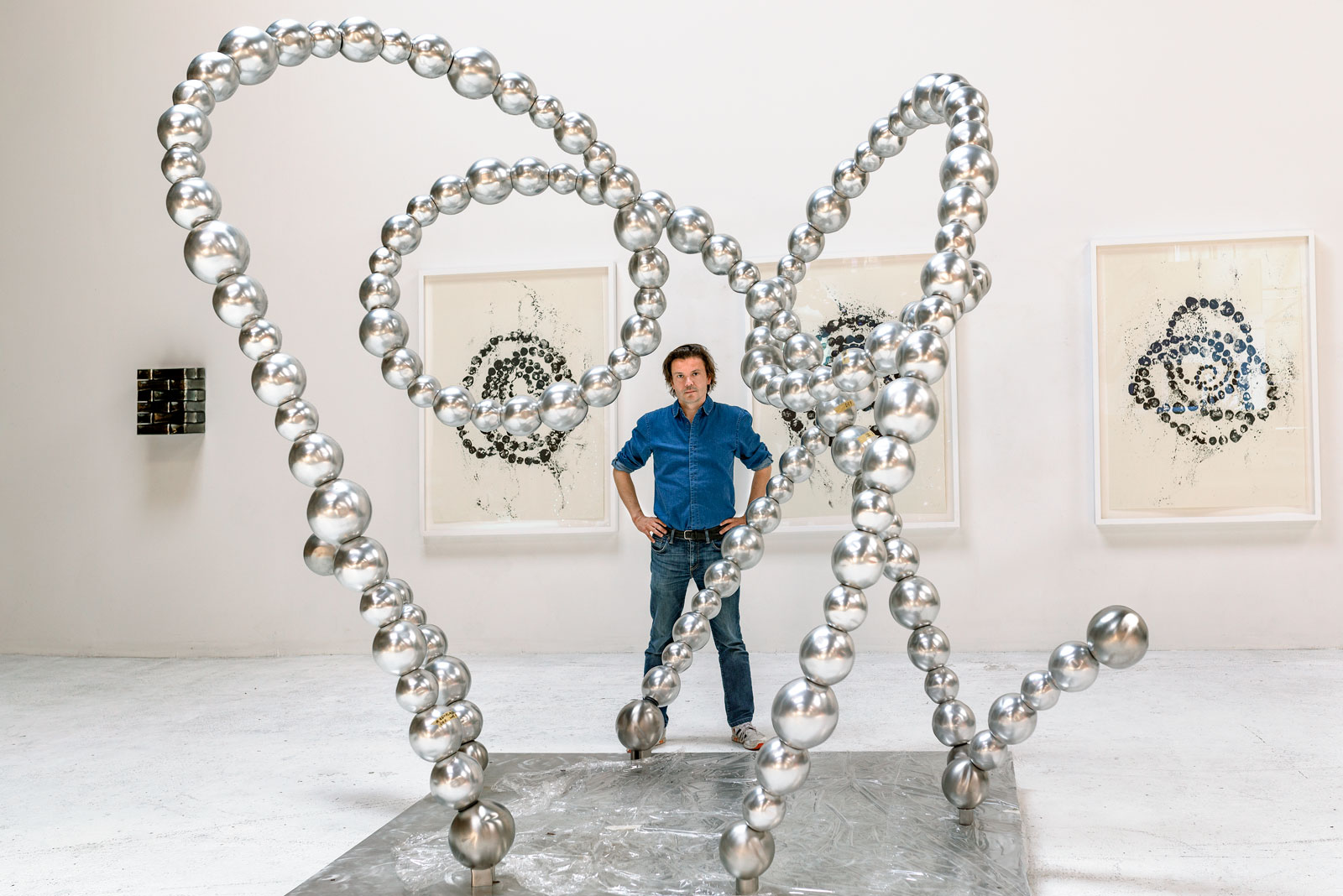
In the sunniest spot of Othoniel’s imaginary garden would be the sparkling Belles Danses, located in the Water Theatre Grove in the palace of Versailles (2015). Visitors to the grove find bamboo and other fragrant plantings breaking quietly into a view and in the center of the promenade three fountain sculptures made with Murano glass beads. The radiant sun gives the beads an animating brilliance, while the stillness of the lake mirrors with precision the arabesques so that it seems a fabulous creature is swimming gaily underwater. When the fountain gushes up, a dynamic rippling melody makes this reflection disappear. “It was a heavy feeling and a big challenge as an artist that I would be the first to design a permanent contemporary art installation in Versailles since Louis XIV. But I worked on this project for 4 years, so I had the time to make it with precision,” says Othoniel who teamed up with landscape architect Louis Benech to submit the winning proposal to revitalize the Water Theatre Grove two centuries after another architect-artist duo, André Le Nôtre and Charles Le Brun, did.
Researching the project, Othoniel discovered that originally the grove was used to stage Louis XIV’s lavish dance and theatrical festivities, so when he came across Raoul Auger Feuillet’s Choregraphie, ou, L’art de décrire la dance, par caracteres, figures, et signes démonstratifs, he was instantly absorbed by the notations that were devised to help the Sun King learn Baroque dance sequences. “When I discovered the shape of this Baroque dance, it was so close to my sculpture. So it was something obvious that I had to work on these forms and to redesign them in a way that the King is dancing.” Thinking in watercolor, he came up with a shape that resonates with the curves of that dance script, forming visual crescendos and diminuendos.

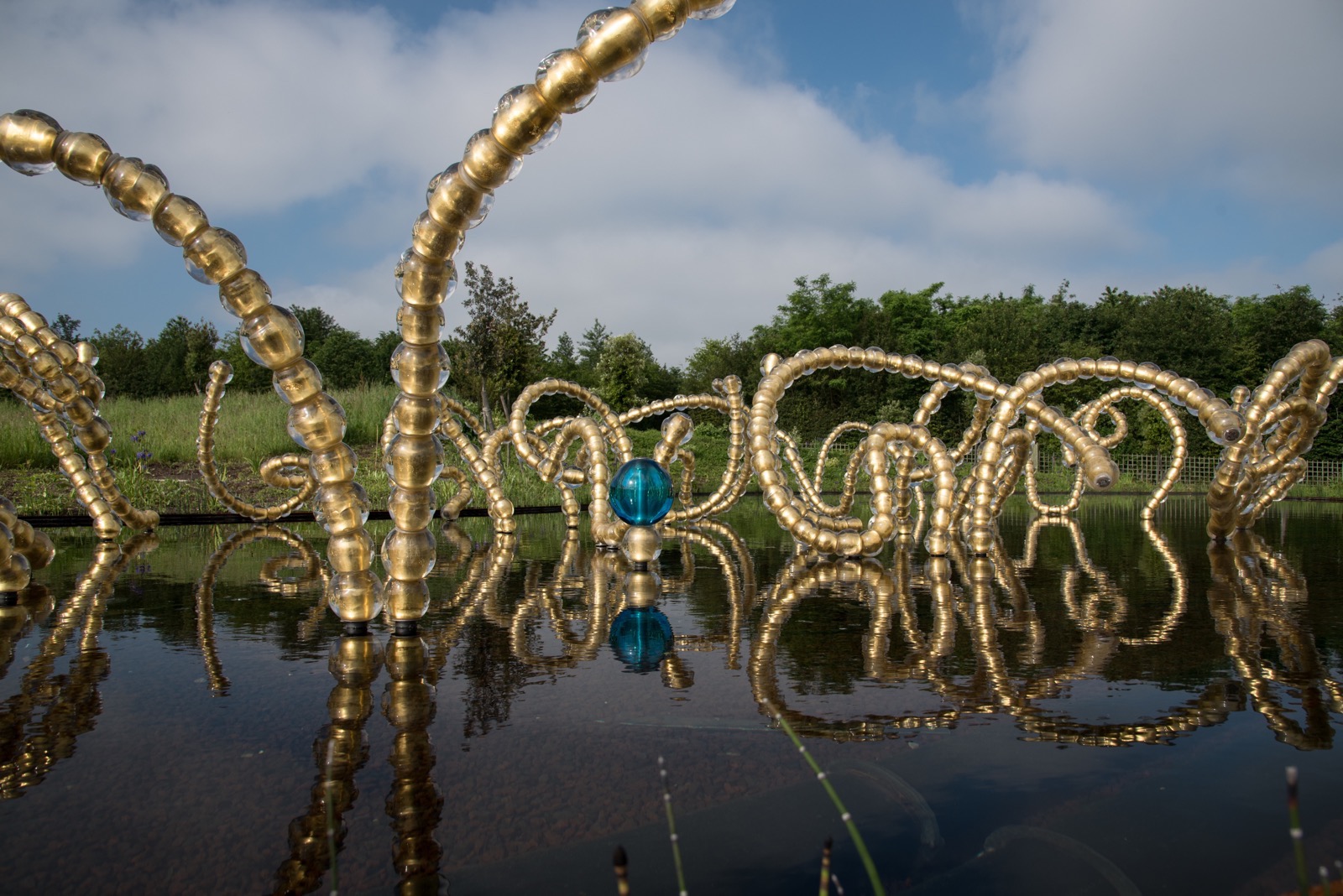

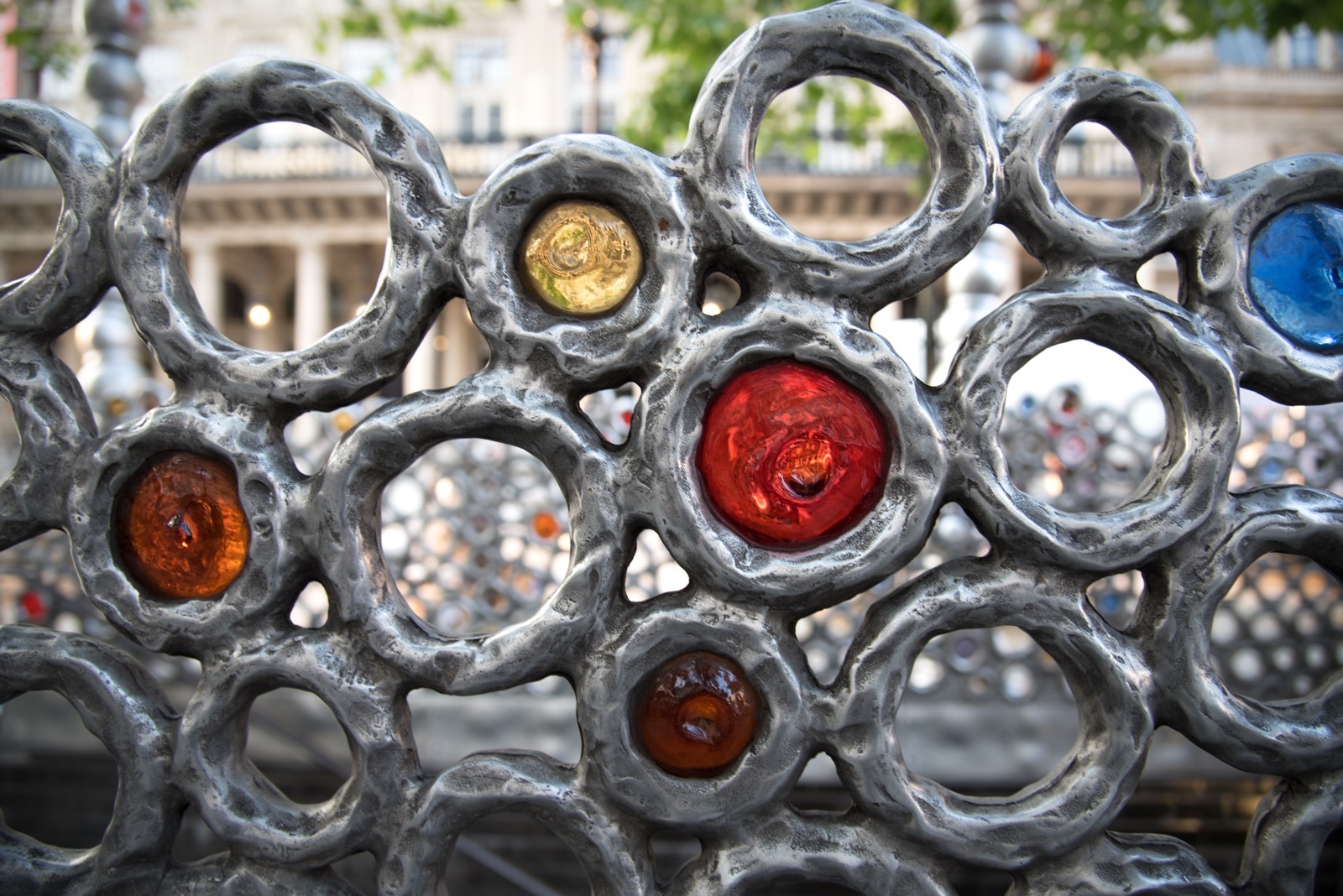
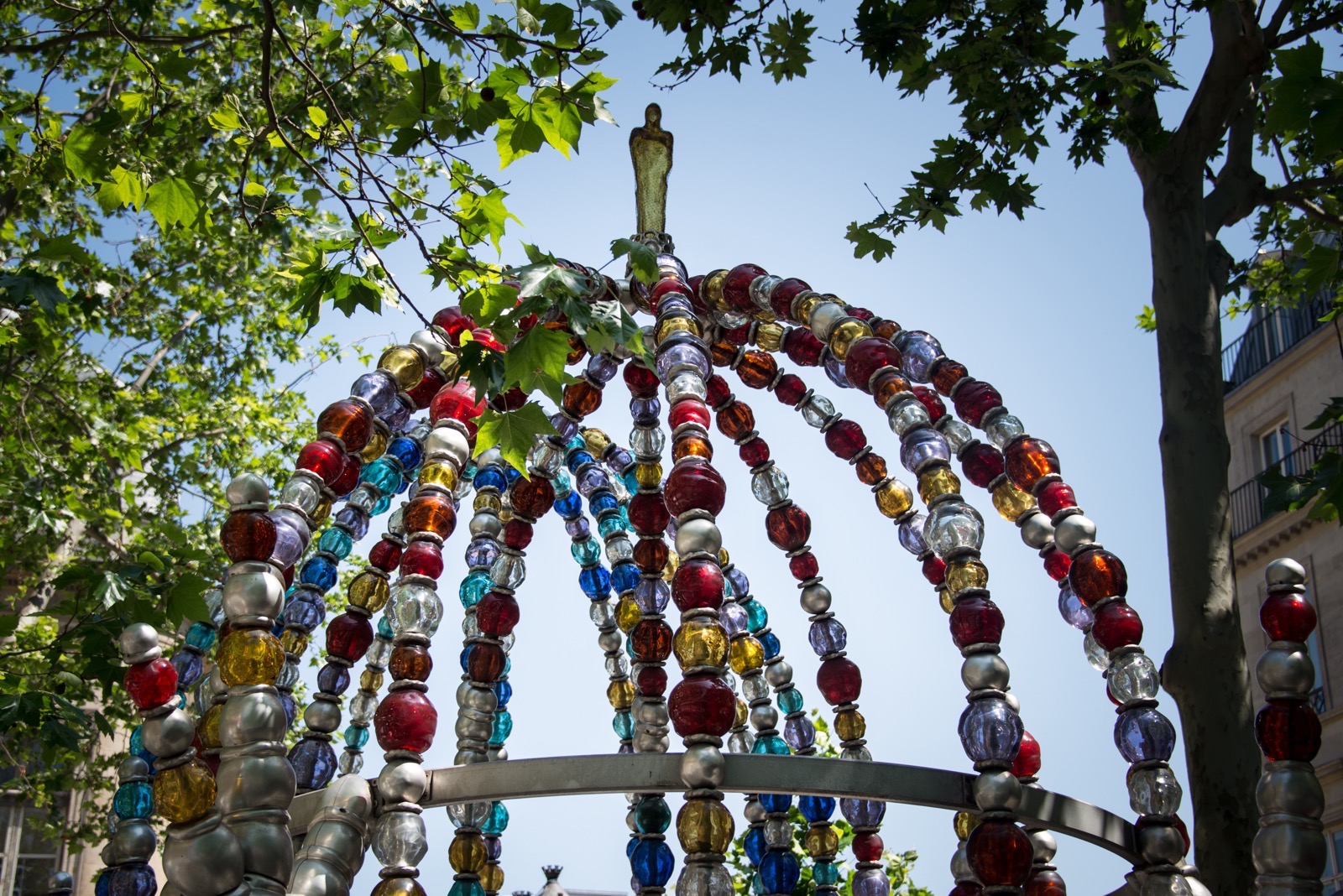
In the quieter 20th arrondissement, in a studio sheltered from the turmoil of the city center, Othoniel works on his larger creations. Amidst hundreds of cubical cardboard boxes, a sculpture in bubble-mirrored surface entitled Lacan’s Knot (2013) produces hundreds of enchanting reflections. “This knot is the simplest of my Lacan knots,” says the artist with a crisp and energetic voice. French psychoanalyst Jacques Lacan used this knot – three rings, arranged in such a way that if one ring is broken, all three are set free in disconnection – to explain the relationship between the real, the symbolic, and the imaginary.
Othoniel took that idea, explored it sculpturally, and produced many variations that will be photographed and published in a book alongside a theory conceived by a Mexican mathematician. “He called me and said ‘I am writing a theory about reflection in a knot and I want to make a book with you because your pieces are really the illustration of my abstract theory.’”
For me now beauty is something almost political.
Jean-Michel Othoniel
The transparent glass beads of a necklace Untitled (2013) suspended from the ceiling sketch a pale shadow on the ground. The color of the beads changes to a vibrant red when the sun’s rays pouring from the skylight softly highlight them. “The beads for me. . . it’s like prayer beads that exist in different cultures. I am fascinated by the idea of sacred and using some elements from a religious vocabulary helps me to speak about the sacred.” Bigger necklaces, the size of the human body, are suspended on trees at the New Orleans Sidney and Walda Besthoff Sculpture Garden. “What I love when I use glass, when I put it outside, is to link it with nature, with the trees, the gardens. To give back the power of this material. Glass is a material very part of nature, not artificial.”
The necklaces are an allegory of the people who fought for their freedom. “The slaves that were hanged when they tried to escape slavery. There is an aura of the missing body, even if I am the only one to see it. But at the same time in New Orleans you have this tradition of this very joyful carnival, Mardi Gras, where people from the floats send necklaces to the people. After Mardi Gras you can see in the trees lots of small necklaces. So it was also a way to make a positive homage to the city. I am not an activist, but I love to talk in a poetic way about important things.”

Under the beads, generous piles of grey bricks create a 3d mosaic that evokes the inky sea and its gentle murmur. Ultimately these will configure a big wave as a rendering on the wall shows. “The Wave will be the masterpiece of the show at the CRAC Museum in Sete, France, in 2017.” It is inspired by Gustave Le Gray’s photograph The Great Wave. “This idea of working in architectural size is my latest obsession. Obsessions are the key for artists. You have to be obsessed by your work, by ideas, by also desires.” Next to the Great Wavestacks of honey-colored bricks evoke a beehive. “These were used to build the Precious Stonewall (2010),” he says, referring to a bejewelled glass wall of an almost rustic simplicity but of a poetic significance in its allusion to the bricks that the poor stack outdoors in India hoping to collect enough to build a house one day.


In the heart of the Marais, Othoniel’s drawing studio overlooks the courtyard of the Picasso Museum from the top floor of an elegant building. There he exhibits small delicate prototypes hovering elegantly in glass cases like a collection of natural rarities and curiosities of incalculable value. Next to the cases is a prototype of Black Lotus, a sculpture of contradictions, with inwardly glowing black beads that deepen and blossom. Othoniel is fascinated by flowers, which are a source of perpetual wonder for him. He has even made an arresting little book, The Secret Language of Flowers, where he explored the symbolic meaning of flowers from the Isabella Stewart Gardner collection in Boston (the artist participate in an artist-in-residence program there) and from other collections around the world through drawings and pictures. In the spirit of his book, the lotus, which grows and flowers above muddy waters, could also be seen as an allegory of his trajectory as an artist. “I come from a dark city with no hope really. But I had the chance to go to the museum when I was very young and see young artists, like Tony Cragg. When I was 7 he was 20, so he was like a big brother working there. I instantly knew I wanted to be part of this world, a place of freedom, and look at life in a different way.”

The walk through Othoniel’s garden is metaphoric like the one in Roussel’s book. His different inventions range from monumental sculptures to small glass “pearls,” with a core covered in gold leaf and a surface ornamented with leaves of gold. Powered with electricity, the translucent spheres produce a delightful effect as the core is subtly illuminated. With its own distinct symmetry and “scars,” each piece is unique. “Glass has a memory. If you injure a ball of melted glass by making a cut into it, the glass will heal up. But when it cools, the wound will reappear. The scar is a reminder that if you want to see beauty you have to experiment this way. It’s not perfect. But I always make beautiful things. It was always a fight with my teachers when I was at school to make things beautiful. And today for me to show this beauty is a sign of hope, because now as the world is collapsing, why don’t we use the artwork to find new hope? For me now beauty is something almost political.”
Paris, 2016. All photographs and text © 2016 by Alexia Antsakli Vardinoyanni – www.artflyer.net




